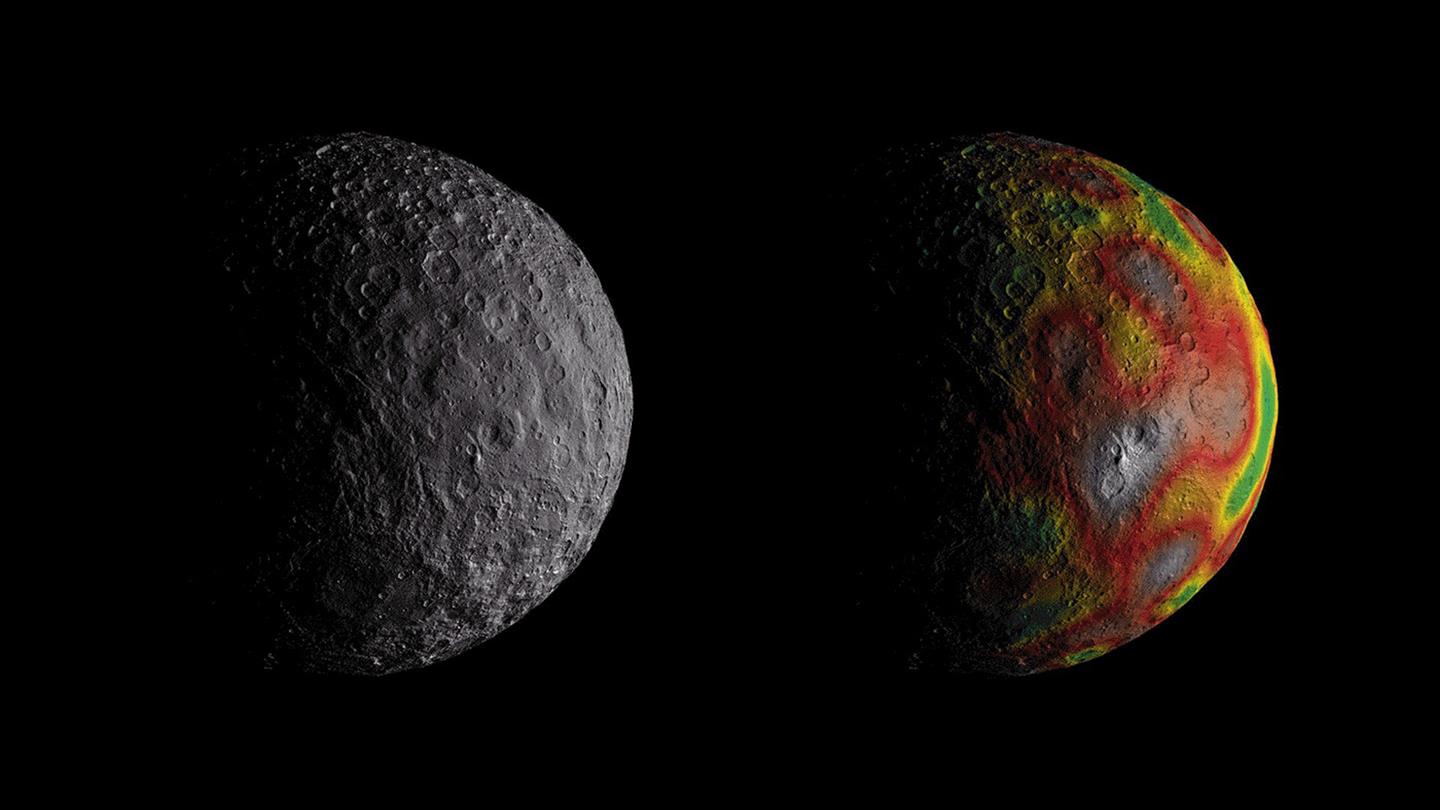Ceres, at almost 1,000 km (620 miles) in diameter, is the largest body in the asteroid belt. Between 2015 and 2018, NASA’s ion-powered Dawn spacecraft visited the dwarf planet, looking for clues to help us understand how our Solar System formed. Ceres is the first dwarf planet ever visited by a spacecraft.
Now that scientists have worked with the data from Dawn, we’re starting to see just how unusual Ceres is. One of the most shocking of Dawn’s findings is the volcano Ahuna Mons, a feature that seems out of place on this tiny world. Now scientists from the German Aerospace Center (DLR) have figured out how this strange feature formed on this intriguing little planet.
“In this region, the interior of Ceres is not solid and rigid, but moving and at least partially fluid.”
Wladimir Neumann, DLR Institute of Planetary Research.
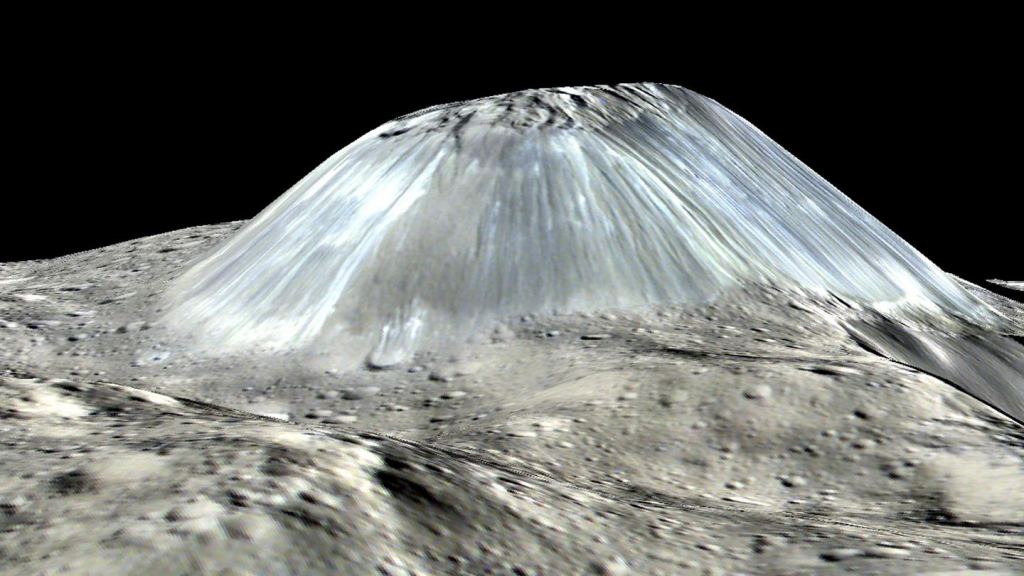
Ahuna Mons rises 4 km (2.5 miles) from the surface of Ceres. It’s sides are smooth and featureless, a signal that the volcano formed recently and hasn’t been there long enough to take on the cratered appearance on the rest of Ceres’ surface. After measuring Ceres’ gravity, and studying the interior structure of the dwarf planet, scientists say that the volcano was created when a bubble of mud, salt water, and rock rose up from the center of Ceres. That bubble burst through a weak point in Ceres’ crust, and formed Ahuna Mons.
So basically, it’s a giant mud volcano.
Ottaviano Ruesch of the European Space Agency (ESA), who was the lead author of the study, said, “We were thrilled to be able to find out which process occurring in Ceres’ mantle, just beneath Ahuna Mons, was responsible for bringing material to the surface.”
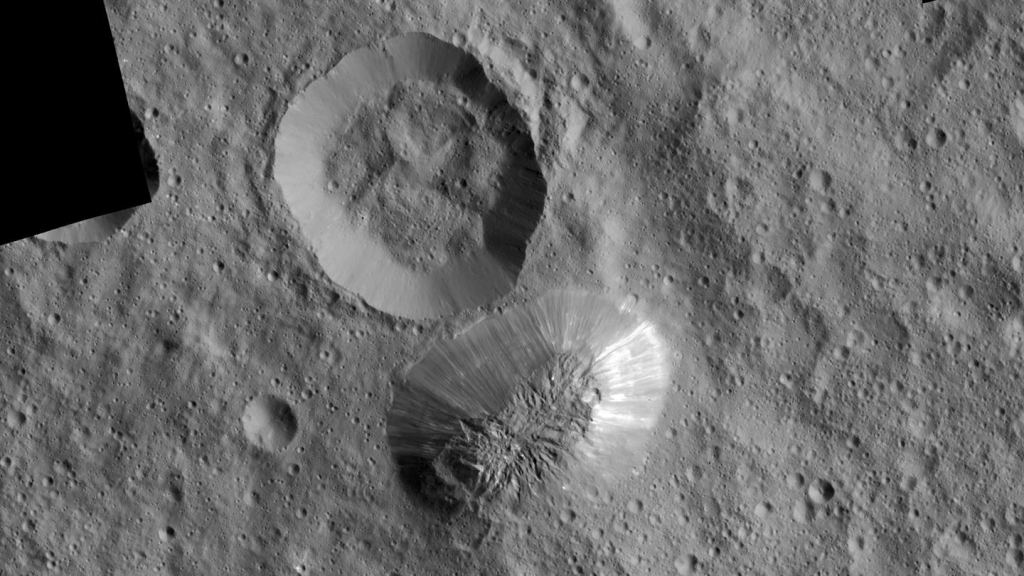
The study outlining these results was published in the journal Nature Geoscience. It involved scientists from DLR, the German Aerospace Center, and from the University of Munster. It’s titled “Slurry extrusion on Ceres from a convective mud-bearing mantle.”
Once the slurry of brine, mud, and rock escaped the interior of Ceres, it hit the cold of space. Ceres has no atmosphere, so the material solidified into the shape we see now.
One of the contributors to this study is Wladimir Neumann of the DLR Institute of Planetary Research in Berlin-Adlershof and the University of Münster. In a press release, he said, “In this region, the interior of Ceres is not solid and rigid, but moving and at least partially fluid. This ‘bubble’ that formed in the mantle of Ceres beneath Ahuna Mons is a mixture of saline water and rock components.”
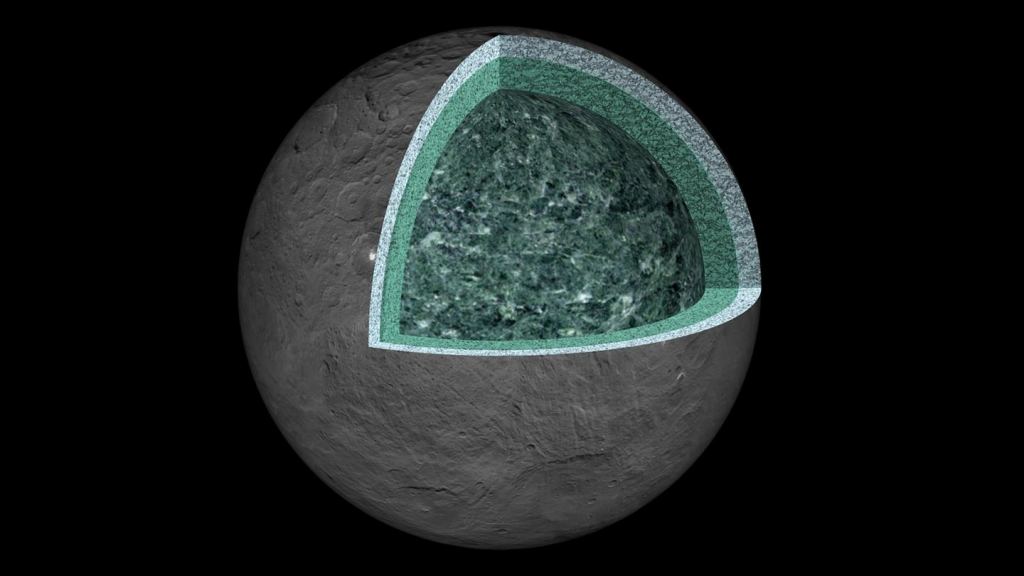
Image Credit: NASA/JPL-Caltech/UCLA/MPS/DLR/IDA
Scientists studying Ceres assume that the dwarf planet is similar in composition to other bodies in the same region. According to that assumption, Ceres consists primarily of siliceous rocks. (Siliceous rocks consist largely of silica, or silicon dioxide: SiO2.) But there will also be a considerable amount of water ice, and likely, layers of liquid water. They’re also working with the assumption that Ceres contains a higher proportion of fresh water and ice than Earth does. They think that up to a quarter of the dwarf planet’s mass is ice or water.
Ceres’ interior is differentiated, meaning that over time, the materials that make up the planet’s interior have segregated into different layers. Heavy elements like iron sunk to the center, while lighter substances like water or aluminum-bearing rock silicates rose. Even though Ceres is 4.5 billion years old, radioactive decay of elements inside the planet are still generating heat, much like on Earth.
This heat generates bubbles of the slurry of brine, mud, and rock, which press up against the solid crust from below. This forms domes up to a kilometer high, and when the pressure breaks through the crust, the slurry flows over the surface and solidifies.
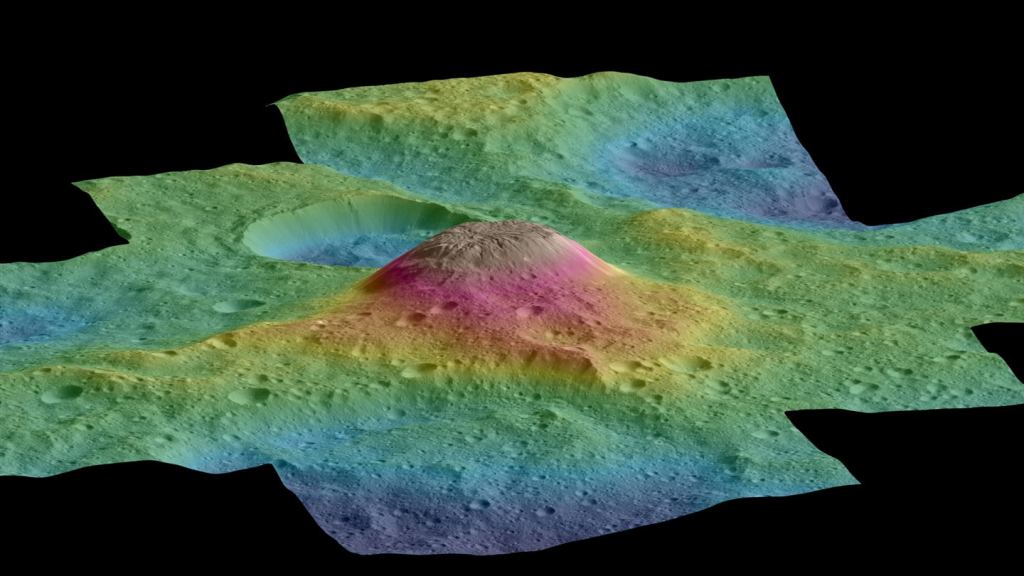
Of course, there’s no way of seeing these bubbles in Ceres’ interior. Gravitational readings betrayed their presence.
Ceres’ gravitational field at Ahuna Mons is an anomaly, and scientists measured that anomaly by monitoring the speed and altitude of Dawn. As Dawn flew over the volcano, the gravity accelerated the spacecraft and lowered its orbit a little. The Doppler effect of those speed and altitude changes on the spacecraft’s radio communications gave it away. “We took a closer look at this anomaly, and further modelling revealed that it had to be a bulge in Ceres’ mantle,” said Ottaviano Ruesch, lead author of the study. “The conclusion was obvious: the mixture of fluid substances and rocks had come up to the surface and piled up into Ahuna Mons.”
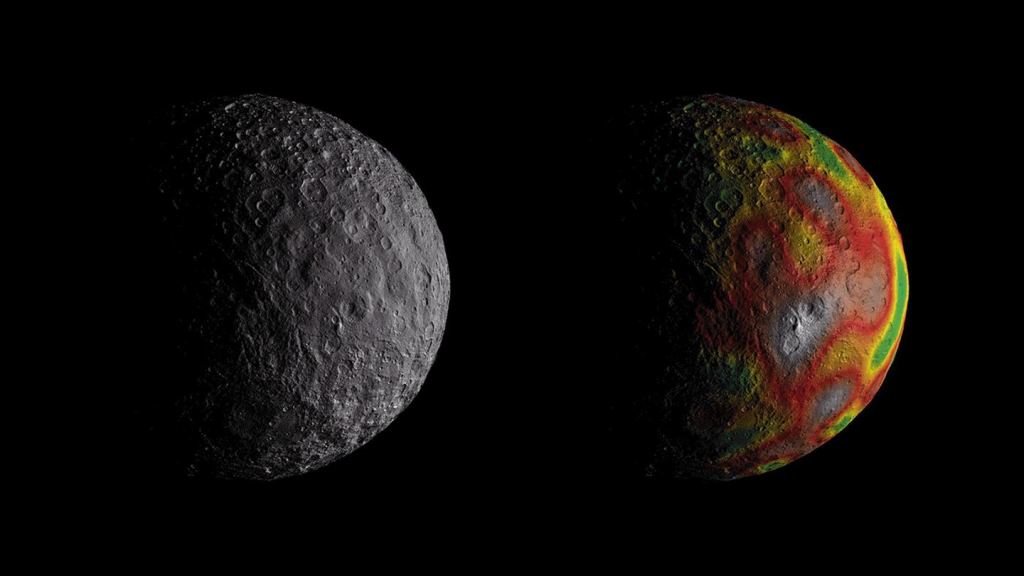
This type of cryo-volcanism is widespread in the outer Solar System. Some of Jupiter’s and Saturn’s moons show evidence of it, and so does Pluto. But those worlds are larger. This study demonstrates that dwarf planets, and maybe even large asteroids, can form bubbles of saline and rock in their interiors, which can then rise to the surface and escape. Planetary scientists think that this process can last billions of years, as long as radioactive decay is still heating the interior.
Sources:
- Press Release: A new and unusual type of volcanic activity
- Research Paper: Slurry extrusion on Ceres from a convective mud-bearing mantle
- NASA: Dawn Mission Overview
- Wikipedia Entry: Ceres

